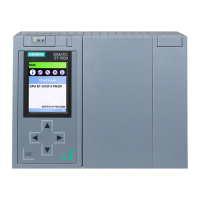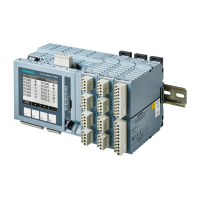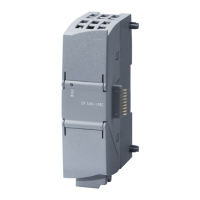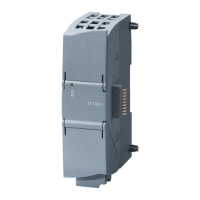Operator controls and operating modes of the CPU 410-5H
7.1 Operating modes of the CPU 410-5H
CPU 410-5H Process Automation/CPU 410 SMART
System Manual, 10/2013, A5E32631667-AA
95
The master CPU is always in RUN mode and the reserve CPU is in LINK-UP or UPDATE
mode during the link-up and update phases.
In addition to the link-up and update functions, which are carried out to establish redundant
system mode, the system also supports linking and updating in combination with
master/reserve changeover.
For detailed information on connect and updating, refer to section Link-up and update
(Page 109).
The ERROR-SEARCH operating state can only be reached from the redundant system
state. During troubleshooting, the redundant system state is exited, the other CPU becomes
master, if necessary, and continues running in solo operation.
Note
If the master CPU changes to STOP during troubleshooting, the troubleshooting is continued
on the standby CPU. However, once troubleshooting is completed, the standby CPU does
not start up again.
The following events will trigger the ERROR-SEARCH operating state:
1. If a one-sided call of OB 121 (on only one CPU) occurs in redundant operation, the CPU
assumes a hardware fault and switches to ERROR-SEARCH operating state. The other
CPU becomes master, if necessary, and continues running in solo operation.
2. If a checksum error occurs on only one CPU in redundant operation, that CPU switches
to ERROR-SEARCH operating state. The other CPU becomes master, if necessary, and
continues running in solo operation.
3. If a RAM/PIQ comparison error is detected in redundant operation, the standby CPU
switches to ERROR-SEARCH operating state (default response), and the master CPU
continues running in solo operation.
The response to RAM/PIQ comparison errors can be modified in the configuration (for
example, the standby CPU switches to STOP).
4. If a multiple-bit error occurs on a CPU in redundant operation, that CPU will switch to
ERROR-SEARCH operating state. The other CPU becomes master, if necessary, and
continues running in solo operation.
OB 84 is called if 2 single-bit errors occur on a CPU in redundant operation within 6
months. The CPU does not change to ERROR-SEARCH operating state.
5. If synchronization is lost during redundant operation, the standby CPU changes to
ERROR-SEARCH operating state. The other CPU remains master and continues running
in solo operation.

